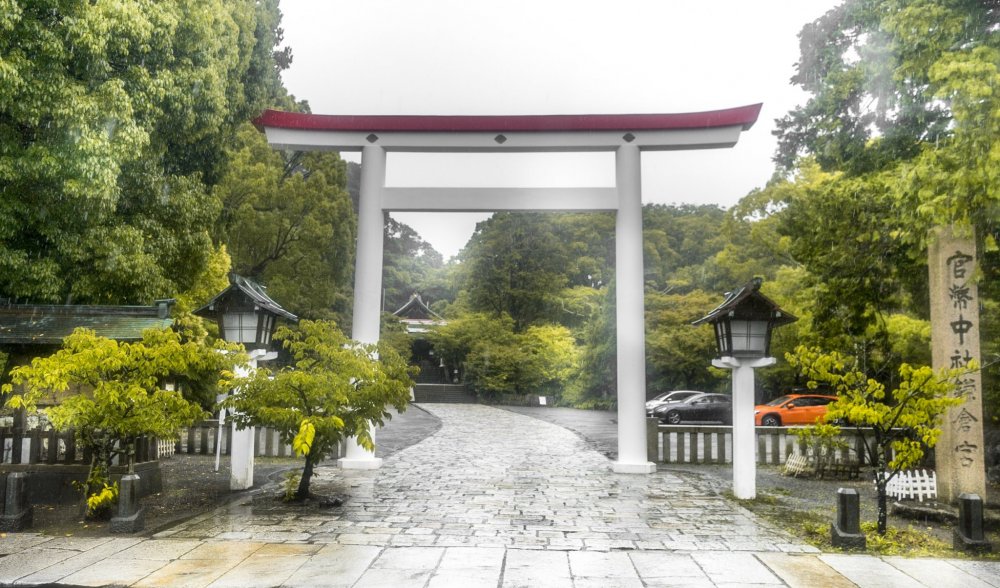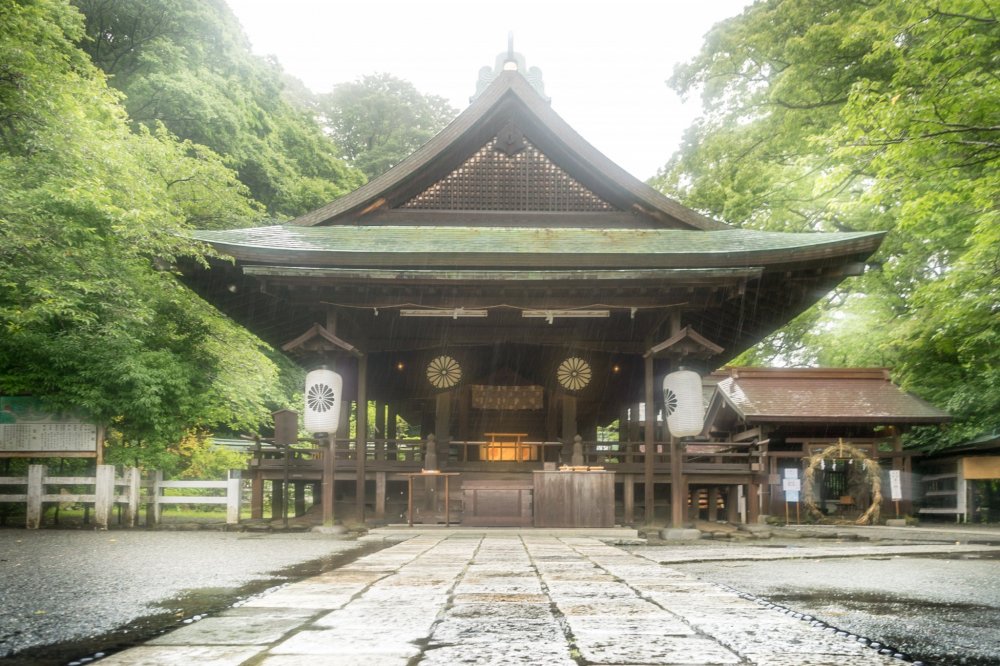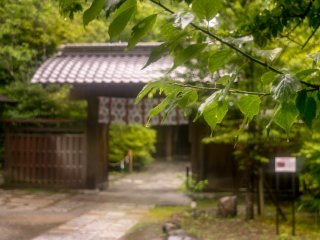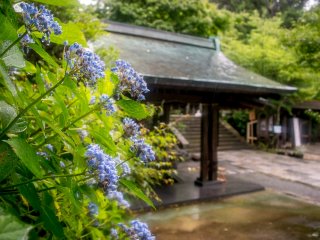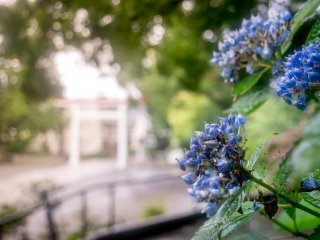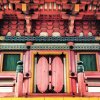I don’t know about you? But after being mostly housebound for the last several months because of COVID 19, the prospect of finally being able to explore some of Japan’s colorful sights has suddenly helped lift those “post lockdown blues”. As June is traditionally known as the hydrangea season, (along with the rain) I ventured out to Kamakuragu in the hope of finding some vibrant colors to lift my spirits.
Built in 1869, Kamakuragu is perhaps one of Kamakura’s “newest” historical buildings, when you consider the likes of, Tsurugaoka Hachimangu or Kenchoji Temple, which were both built over 800 hundred years ago. Despite this fact, however, Kamakuragu has a much longer history since it was built on the site of a cave where Prince Morinaga was imprisoned and later executed in 1335, as part of a feudal dispute. The cave still exists today and has been visited by countless people over the years, to pray for the soul of this enshrined Prince. Arriving on a wet, dreary, and rain-soaked day, I came here in the hope of experiencing some of Kamakura’s rich history, along with its famed hydrangeas.
Although perhaps, overshadowed by some of Kamakura’s more popular sights, this shrine is located in a peaceful residential neighborhood that feels a world apart from the likes of Tsugaoka Hachimangu and represents an excellent place to find some peace and solitude. Moreover, this shrine serves as an excellent base to explore the nearby area since, there are numerous other temples and shrines located just a stone’s throw away.
As for the hydrangeas, well let’s just say that I was originally going to name this article “Hydrangeas at Kamakuragu” however, since, I received a lot more rain than the former, (like on numerous other occasions) I titled this article accordingly
Getting there
Kamakuragu is about a 30 minute walk from Kamakura Station. Alternatively, you can take a bus bound for “Ooto-no-miya” (大塔宮行き), from bus stand number 4, which is located outside of the station’s east exit. The bus ride takes about 10 minutes and stops directly in front of the shrine
More info
Find out more about Kamakuragu Shrine.

